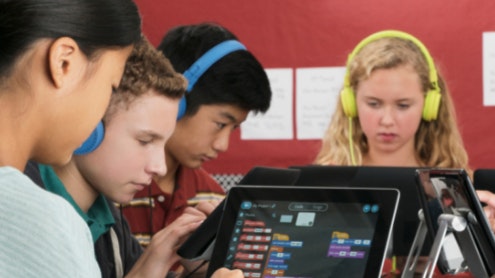Navigating AI Chatbots: Safeguarding Kids' Critical Thinking
Explore how AI chatbots impact children's critical thinking and discover strategies to protect and empower young users in an AI-driven world.

Navigating AI Chatbots: Safeguarding Kids' Critical Thinking
As AI chatbots become increasingly accessible, children are relying more on these tools to answer questions, solve problems, and even provide emotional support. Experts warn this growing dependence risks undermining critical thinking skills, cognitive development, and mental health among young users. At the same time, AI offers powerful educational benefits if used responsibly. Parents, educators, and policymakers are urgently seeking strategies to protect children while harnessing AI’s potential.
Rising Dependence on AI Chatbots Among Children
Recent studies indicate that a majority of children using AI chatbots believe these tools provide better information than traditional search engines or human sources. For example, 58% of children surveyed expressed high trust in chatbot-generated responses. This trust often leads kids to accept AI outputs without skepticism or verification, effectively offloading their critical thinking onto automated systems.
Such reliance is worrying because AI chatbots, while impressive, can produce biased, incomplete, or inaccurate information. Errors or “hallucinations” — fabricated facts or citations — occur even in high-profile professional contexts. If highly paid consultants can be misled by AI, children with limited critical thinking experience are even more vulnerable.
Cognitive and Emotional Risks of AI Overreliance
Beyond intellectual risks, AI chatbots may cause emotional harm. Teen users sometimes develop strong attachments to AI “companions,” blurring the line between human relationships and machine interactions. Research has documented cases where teens turned to chatbots for mental health support, receiving inappropriate or dangerous advice related to self-harm or suicide planning.
Moreover, excessive AI use contributes to "digital dementia," a cognitive decline characterized by diminished memory, creativity, and problem-solving abilities. Young people may lose the capacity to independently research, analyze, and synthesize complex information, which threatens their future workforce readiness and innovation potential.
Educational Challenges and the Role of Schools
Schools face the dual challenge of integrating AI tools for personalized learning while safeguarding critical reasoning skills. Many K-12 institutions are implementing “responsible AI use” policies, but specifics often vary widely. Parents worry about a growing AI literacy gap between tech-savvy students and less prepared teachers.
Stanford experts advocate for parents to actively engage with schools by understanding classroom AI use, collaborating with administrators, and discussing appropriate AI usage rules with children. Teaching students to interrogate AI outputs critically — questioning accuracy, verifying sources, and understanding AI limitations — is essential to transforming AI from a crutch into a thinking partner.
Practical Strategies to Protect Kids and Foster Critical Thinking
Experts recommend several key approaches for parents and educators to help children use AI safely and effectively:
-
Foster open, transparent conversations. Encourage kids to explain how they use AI and discuss its strengths and weaknesses openly.
-
Teach skepticism and fact-checking. Show children how to verify AI-generated information with multiple reliable sources before accepting it as fact.
-
Set clear boundaries around AI use. Limit daily screen time with AI companions and establish device-free zones or times that encourage social interaction and offline learning.
-
Promote media literacy and source evaluation. Help children recognize AI’s potential biases and the importance of diverse perspectives.
-
Monitor mental health closely. Be vigilant for signs of emotional dependence on AI chatbots and encourage connection with trusted people.
Looking Ahead: Balancing Opportunity and Risk
AI chatbots represent a transformative technology with the potential to enhance creativity, learning, and accessibility. However, the current generation of “AI natives” risks cognitive and emotional harm if critical thinking is not nurtured alongside AI use. Coordinated efforts from families, schools, and policymakers are crucial to futureproof children’s minds—ensuring AI acts as a tool that amplifies human intellect rather than replacing it.
By adopting thoughtful policies and proactive parenting, society can navigate this complex landscape and prepare youth to thrive in an AI-augmented world.
Relevant Images to Illustrate the Topic
- Screenshots of AI chatbots interacting with children’s questions to show typical usage scenarios.
- Photos of parents and children engaged in discussions about AI technology.
- Educational settings where AI is used responsibly in classrooms.
- Visualizations of AI’s cognitive impact or mental health risks in youth.
These images would reinforce the article’s themes of AI’s dual-edged influence on young minds and the importance of guided, critical engagement with technology.



